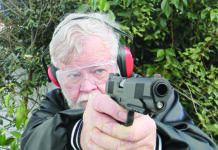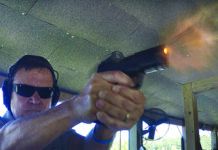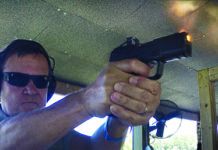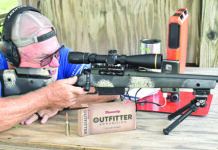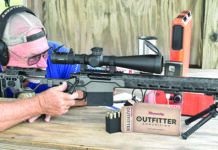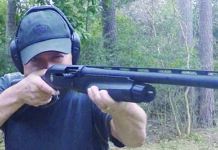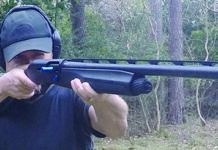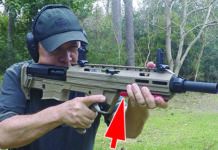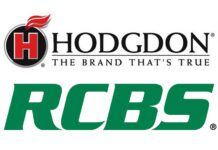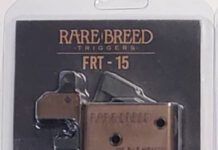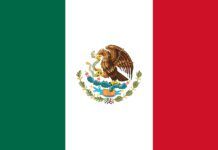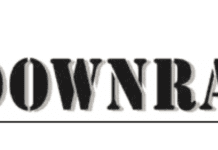The best shotgun shooters usually have a collection of special-purpose guns; that is, expert competitors and hunters have their favorites among pumps, over/unders and automatics, and they match the gun to the course or field conditions. By sticking to a small set of guns as their first choices, they grow very familiar with them and get pretty good at killing things or breaking targets.
But to gather such a varied and strong-performing collection requires that you start out with pretty good guns. Otherwise, they will fail, be balky, not fit right, get dirty, or simply be more trouble than they are worth. Picking these must-have shotguns is like picking the right spouse: Do it right, and youre very happy for a long time. Do it wrong, and, well, you know the rest.
There are two broad strategies for finding guns that are worth adding to your personal collection. You can start fresh, and pay a premium for each new gun. Or, you can find a gun somebody else has divorced. If you know what to look for, the latter course can get you superb shotguns for a song. So with this money-saving strategy in mind, we interviewed several veteran shooters, gunsmiths, and hunters to figure out how several well-known, and not so well-known, shotguns rank in terms of durability, function, and shootability. We canvassed these experts and came up with several products that would be worth searching out and buying, and some that arent worth the money.
Pump Actions
Remington 870. This is the best-selling shotgun in the world, and with good reason. It is very well made and is easily serviced. Parts are readily available, and models have been made with just about every conceivable barrel length and choke. The newer models are all chambered for 3-inch shells and are fitted with screw-in choke systems. They are available in several different degrees of finish.
What to watch for: Firing-pin return springs, magazine springs, ejectors and extractors are sometimes prone to breakage, but these parts are easily obtained and installed. The receiver is forged steel and thick at the top, making it a good choice for scope-base installation.
Our advice: The Remington 870 shotgun can generally be found in gun stores for $175 to $400, depending on grade and condition. If you find one in this price range with its wood intact, blueing free of blemishes, and a pit-free barrel, buy it.
Ithaca 37. This is the oldest pump shotgun design still in production, and for good reason. Unlike some of its contemporaries, it has a simple and elegant design that simplifies both manufacture and repair. The gun is easily serviced and parts are easily found.
Watch for: Areas of weakness on this gun are its shell stops, which occasionally need attention, main springs that can become weak with age, and the action bar-to-action tube welds, which are often nothing more that two spot welds. They can break due to extreme recoil.
Our advice: Though sturdy, the used Ithaca 37, in our view, has more flaws than the other pump guns noted above. They often sell used for $175 to $350, depending on condition and features. We wouldnt go much above $225 to $250 for the gun.
Mossberg 500. There are certainly a lot of these shotguns around, and they are inexpensive even new, often retailing for $250 or less.
Shortcomings: Weak areas include its plastic safety button, which might not sound all that bad unless youve seen one break due to brittleness in cold weather (a steel safety button is available as an aftermarket item). The trigger assembly is also made of plastic and is partly retained in the receiver by two plastic protrusions in its front end. These are also prone to breakage.
Our advice: Mossberg 500s often sell for $100 to $175 in good condition. Even so, in our opinion, there are much better pump shotgun buys. This model has so many shortcomings that we dont recommend it as a good used-gun buy.
Winchester 1200. This is not a bad shotgun at all. Fans of the Winchester Model 12 might not hold it in high regard, but it is very reliable, inexpensive, and it points like a Winchester. Most of them have the Win Choke screw-in choke system and vent ribs. The newer models are chambered for 3-inch shells and are quite stout in spite of their alloy receivers and stand up very well to magnum recoil.
Downsides: You might expect an occasional broken ejector or ejector pin, and the safeties are very sensitive to dirt and unburned gunpowder.
Our advice: Winchester 1200 shotguns usually sell for $125 to $250 in many gun shops. At $200 or less, we would consider them a good buy.
High Standard/J.C. Higgins Pump Shotgun. This is quite likely the best pump shotgun that nobody knows about. It was built by High Standard in Connecticut-and built extremely well. Most of the High Standard pump shotguns were made for Sears & Roebuck and sold under the J.C. Higgins name. They have a forged-steel receiver and a single pump-action bar much like the Winchester Model 12. They were made in all common barrel lengths and chokes and can be found both with and without vent ribs. With a steel receiver that is very thick at the top and a non-takedown barrel-to-receiver design, this is an excellent choice for an accurate scoped slug gun.
Watch for: You might have to replace an occasional firing pin, shell stop, or magazine spring in this shotgun.
Our advice: Though they can be hard to come by, the High Standard/J.C. Higgins Pump Shotgun can be found in gun shops for $75 to $200 depending on their condition. If a given guns metal and wood are in good shape, we would pay up to $200 for it.
Semiautomatic Shotguns
Remington 1100. Without a doubt, this is the most popular semi-automatic shotgun in the used shotgun market. Built from the early 1960s until 1987 (and still manufactured in the smaller gauges), just about every conceivable barrel length and choke can be found. The later 1100s were equipped with the Rem-Choke screw-in choke system and were offered in Special Purpose and Express finishes. The most commonly found 1100 will have a gloss wood and metal finish. This is a nice-pointing shotgun with a very low recoil sensation. This accounts for its popularity as a skeet and trap shotgun. Also, the Remington 1100 is very reliable and easily maintained. Rebuild kits that are now available from Brownells allow the shooter to replace most of the guns wearing parts quickly.
Problems: Expect the 1100 to be a finicky in sub-zero weather. It will need to be kept clean, and the action bars will need lubricant. A Remington 1100 owner will want to keep a spare O-ring handy, as this provides the necessary gas seal for proper operation. Firing-pin return springs and extractors are the most likely parts to fail, and the buttstock should be removed occasionally to service and clean the action spring and tube. This is especially important if the gun is used by a waterfowl hunter in wet or saltwater conditions.
Our advice: Remington 1100s can be found in used gun racks for $250 to $450, depending on their condition and features. 1100s with good cosmetics and no excessive signs of action wear or metal fatigue are worth those prices.
Beretta 303. The Beretta 303 is a very high quality and nicely finished semiautomatic shotgun. Its internal-piston design makes it a very reliable and popular shotgun for all target sports. They are equipped with screw-in chokes and available in many different barrel lengths.
Flaws: Not many. The Beretta semiauto shotguns are generally trouble free, occasionally suffering from a broken extractor or firing pin. As with any semiauto, this shotgun likes to be kept clean and should not be over-oiled.
Our advice: Buy the Beretta 303 shotgun for $300 to $450, if its in good exterior condition.
Winchester Super-X. This solid, durable shotgun nameplate has already seen a resurrection of sorts with the 1999 introduction of the Super X-2. This bespeaks highly of Winchesters fondness for the designation, and with good reason. The Super-X is a solid, durable gun with a long history of upland and waterfowling success. In fact, it was largely discontinued because of manufacturing costs. Those costs meant a heavy, forged receiver, a cut-checkered forend, and a decent trigger group in the originals.
Downsides: The Super-X is heavy. Also, the guns gas valve will need to be replaced at some point.
Our advice: The Winchester Super-X regularly sells for $300 to $400, depending on its condition. This is a good shotgun for that amount of money.
Smith & Wesson/Mossberg 1000. This is one of our favorite semiautomatic shotguns. It was built by Howa in Japan and imported by Smith & Wesson and later by O.F. Mossberg. It is an extremely nicely finished firearm with cut checkering and a semi-gloss finish. Later 1000s digested both 2 3/4- and 3-inch loads by employing a gas-release valve that vented any extra gas pressure. These were the 1000 Super 12 models, and they were also available under the Water Fowler nameplate, with dull wood finish and Parkerized metal surfaces. The later models had screw-in chokes that were compatible with the Browning Invector choke system. The 1000s internal gas piston design made it one of the more reliable semiautos in cold weather. This makes it a favorite with late-season rabbit hunters and northern skeet shooters. Parts for this shotgun are still readily available.
Shortcomings: The safety on the 1000 auto is very sensitive to dirt and unburned gun powder and must be kept clean. A 1000 auto owner should keep a spare gas piston buffer on hand, as these tend to dissolve with age and gum up the piston and magazine tube.
Our advice: These shotguns can be found used for $250 to $400, depending on condition and features. We would buy one.
Winchester 1400. This is a very reliable and inexpensive semiautomatic shotgun, but it has two great disadvantages that pull it down as a used shotgun choice. Its magazine holds only two rounds (making it a three-shot auto), and it was not manufactured in a 3-inch magnum model. As with any semiauto, the 1400 likes to be clean. Also, the safety button is very sensitive to dirt and unburned gun powder and must be occasionally cleaned with compressed air. In the older models, the screw that attached the action bar to the bolt was prone to breakage.
Our advice: These disadvantages are enough to discourage us from paying $200 to $300 for a used Winchester 1400.
Over/Unders
Browning Citori. Brownings modified Superposed design manufactured by B.C. Miroku in Japan is an excellent choice in a used over/under shotgun. These models are extremely well built and if they have any fault, they may be too glossy and highly finished for the tastes of many hunters.
Look for: In hard use, you should expect to replace a firing pin and firing-pin return spring occasionally, but these are relatively inexpensive and readily available. Early models were made with fixed chokes and are usually priced a bit lower that newer screw-in choked models.
Our advice: Pass on the earlier models without screw chokes if you have a choice. Otherwise, a used 12- or 20-gauge Citori in good condition is worth its customary $600 to $800 asking price.
Charles Daly-Miroku. This is the older brother of the Browning Citori. It was also made by B.C. Miroku of Japan, but it is different from the Citori in a few major ways. The Miroku-made Charles Daly was not offered with screw-in chokes, but many fixed-choke configurations and barrel lengths can be found. In the higher grade Charles Daly shotguns, you will find hand engraving that is much more pleasing than the embellishments found on the Browning version. The biggest difference mechanically between the Citori and the Charles Daly is the mainspring system. The Charles Daly uses V-springs, while the Browning uses coils. Coil springs are much more reliable than V-springs, and most of them will easily last the life of the shotgun without weakening or breakage. A Charles Daly owner will no doubt one day need to replace his or her V-springs, and this is not the easiest repair to undertake. There is, however, an advantage to the V-spring, and that is its superior lock time. Many shooters will find this advantage well worth the inconvenience of an occasional breakage.
Downsides: No significant ones.
Our advice: The Charles Daly-Miroku shotguns can be found for $500 to $750 in gunshops. They are very good values, in our opinion.
Ruger Red Label. The raised hinge-pin position gives the Red Label a sleek and pleasing appearance when compared to the taller receiver in the Superposed-design shotguns. Also, Ruger has superb warranty and service departments.
Flaws: The potential problems to beware of in a Red Label are cracked buttstocks due to over tightening of the buttstock through-bolt and weak primer hits. The latter can generally be fixed by replacing both mainsprings and spring struts.
Our advice: This shotgun holds its value extremely well and can be found as a used offering in the $600 to $800 range. For that money, we would buy this gun used if it had good external cosmetics and no visible operational flaws.
Charles Daly (Italian): These shotguns are not in the same quality category as the Miroku Daly or Citori shotguns, in our view.
Faults: The Italian-made Charles Dalys might suit the occasional hunter, but they will not stand up to the rigors of target shooting. Broken firing pins, weak main springs, faulty ejectors, and unreliable single triggers are all common faults on these shotguns. Our advice: There are better used shotguns out there than the Italian-made Charles Daly, which can be found in used gun racks for $350 to $500.



